Musk Thistle
Information
Carduus nutans - Asteraceae Family - Biennial
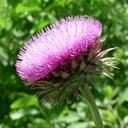
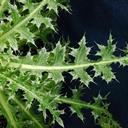
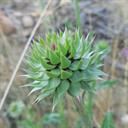
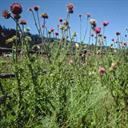
Identification
- Flowers: Plants have large disk shaped, showy red to purple flower heads, that droop when mature.
- Seeds: A single plant can produce up to 120,000 seeds annually, with seeds remaining viable in the soil up to 5 years.
- Leaves: Very spiny stems and leaves. Stems have a winged appearance.
- Flowering Time: June - September.
- Life cycle/ other: Biennial growing up to 6 feet tall.
Impacts
- Musk thistle is continuous throughout the United States. It invades many types of habitats but is a serious threat to pastures as it is unpalatable to livestock.
- Once established it spreads rapidly because of the large number of seeds produced.
Control
Most effective control methods
- Prevention of this plant's invasion is the best form of management. Control plants before they flower and set seed.
- Control of these plants must include preventing new seed dispersal for up to 12 years.
- For small infestations the best method for removal is digging them out by hand.
- For larger infestations the use of herbicide on young plants in the rosette stage before flowering prevents seed set. Picloram and metsulfuron offer excellent control.
- In both small and large infestations, plant competition by seeding disturbed areas with desirable grass species is helpful for long-term management.
- Several biological control agents have been released but have varying degrees of effectiveness. The most widely introduced species is Rhinocyllus conicusus.
Control methods and timing
| March | April | May | June | July | Aug | Sept | Oct |
|---|---|---|---|---|---|---|---|
|
Prev Mech Chem |
Prev Mech Chem |
Prev Mech Chem |
Prev Mech |
Prev Mech |
Prev Mech |
Prev Mech Chem |
Prev Mech Chem |
Prevention (Prev) Monitor and destroy new plants before seed production.
Mechanical (Mech) Hand pulling, digging, cutting, mowing and tilling.
Cultural (Cult) Biological control agents, livestock grazing, and revegetation practices.
Chemical (Chem) Selective herbicides based on the plant and the specific location. Check our weed fact sheets for specific control information.
Large Images
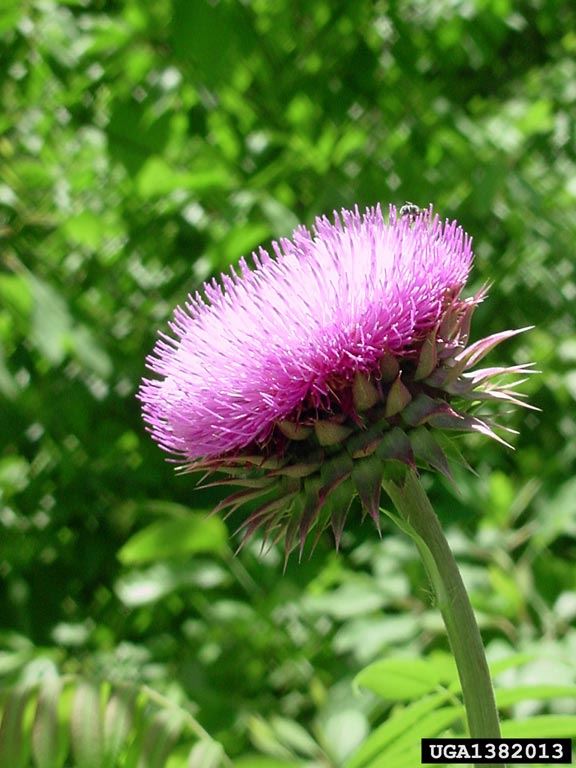
Musk thistle: flower
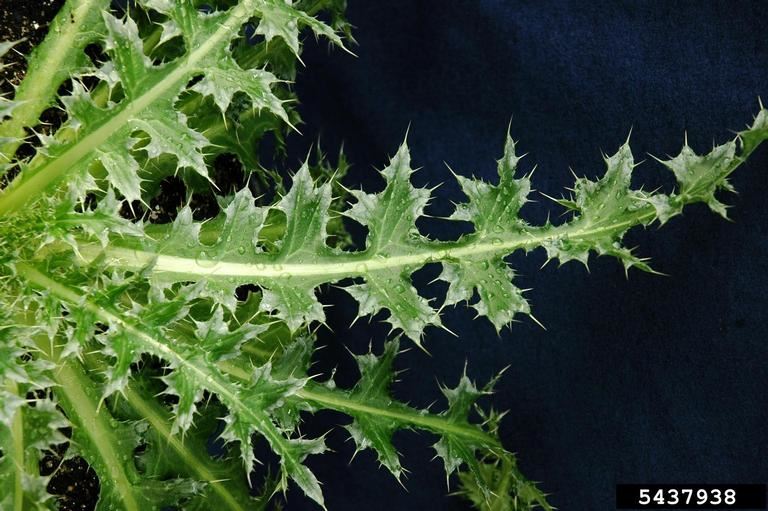
Musk thistle: foliage
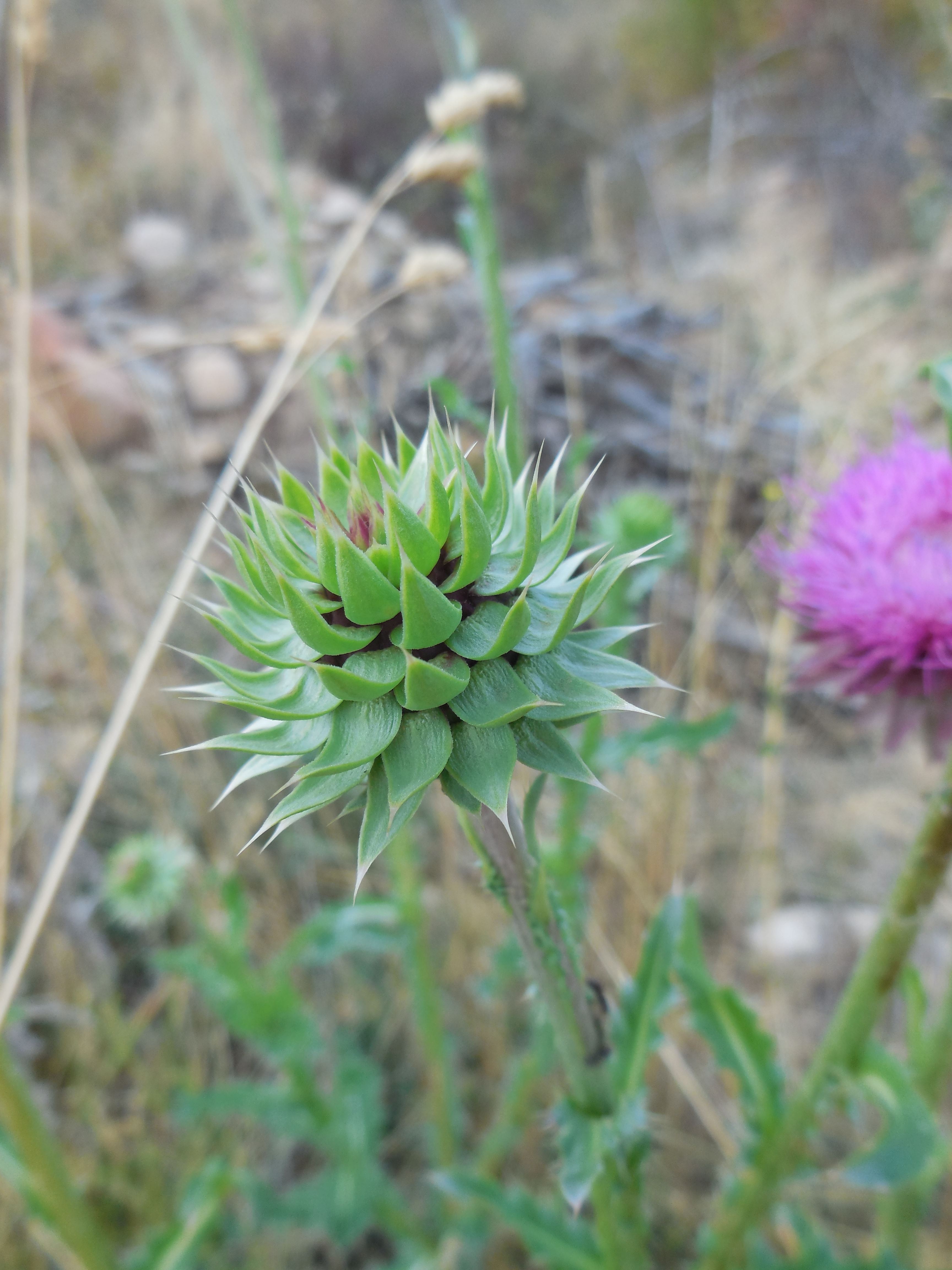
Musk thistle: flower
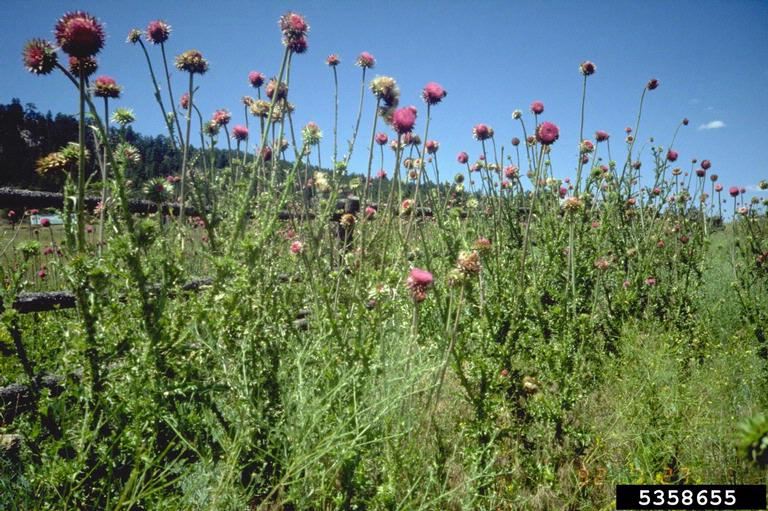
Musk thistle: infestation
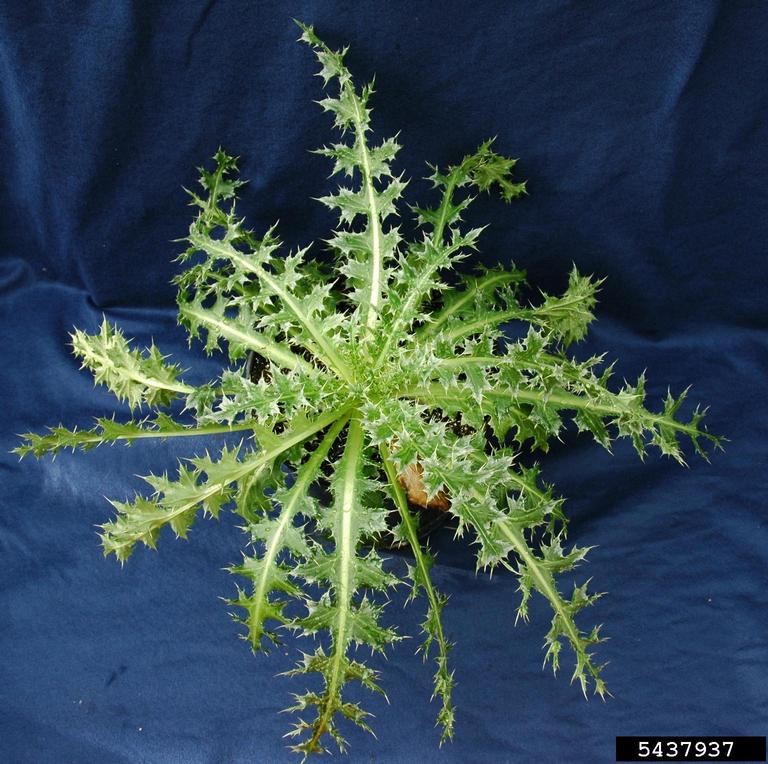
Musk thistle: rosette
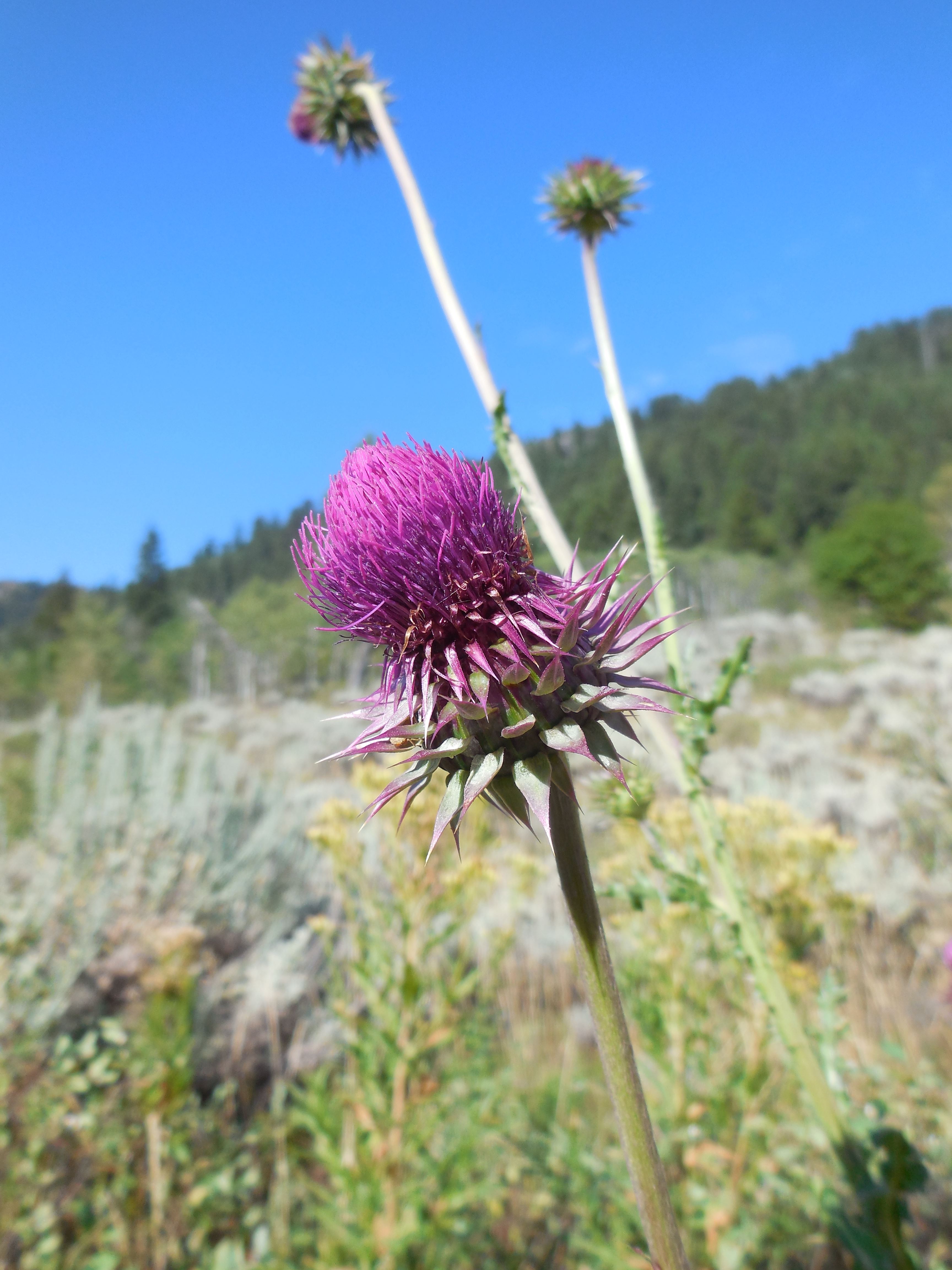
Musk thistle: flower
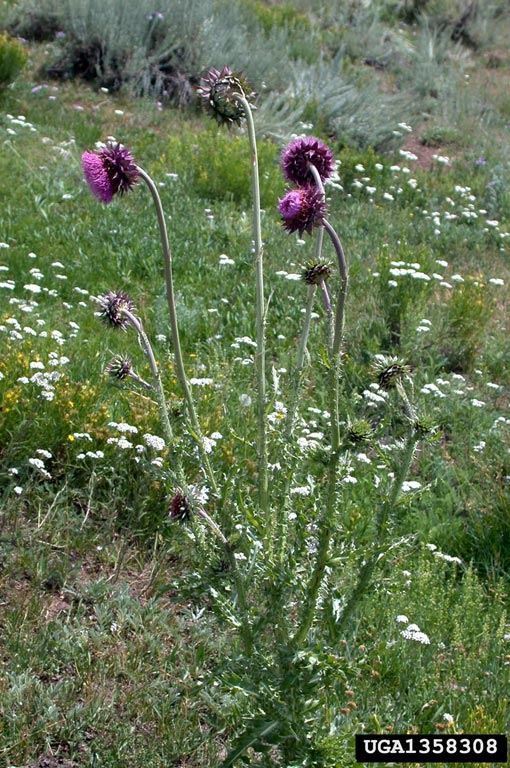
Musk thistle
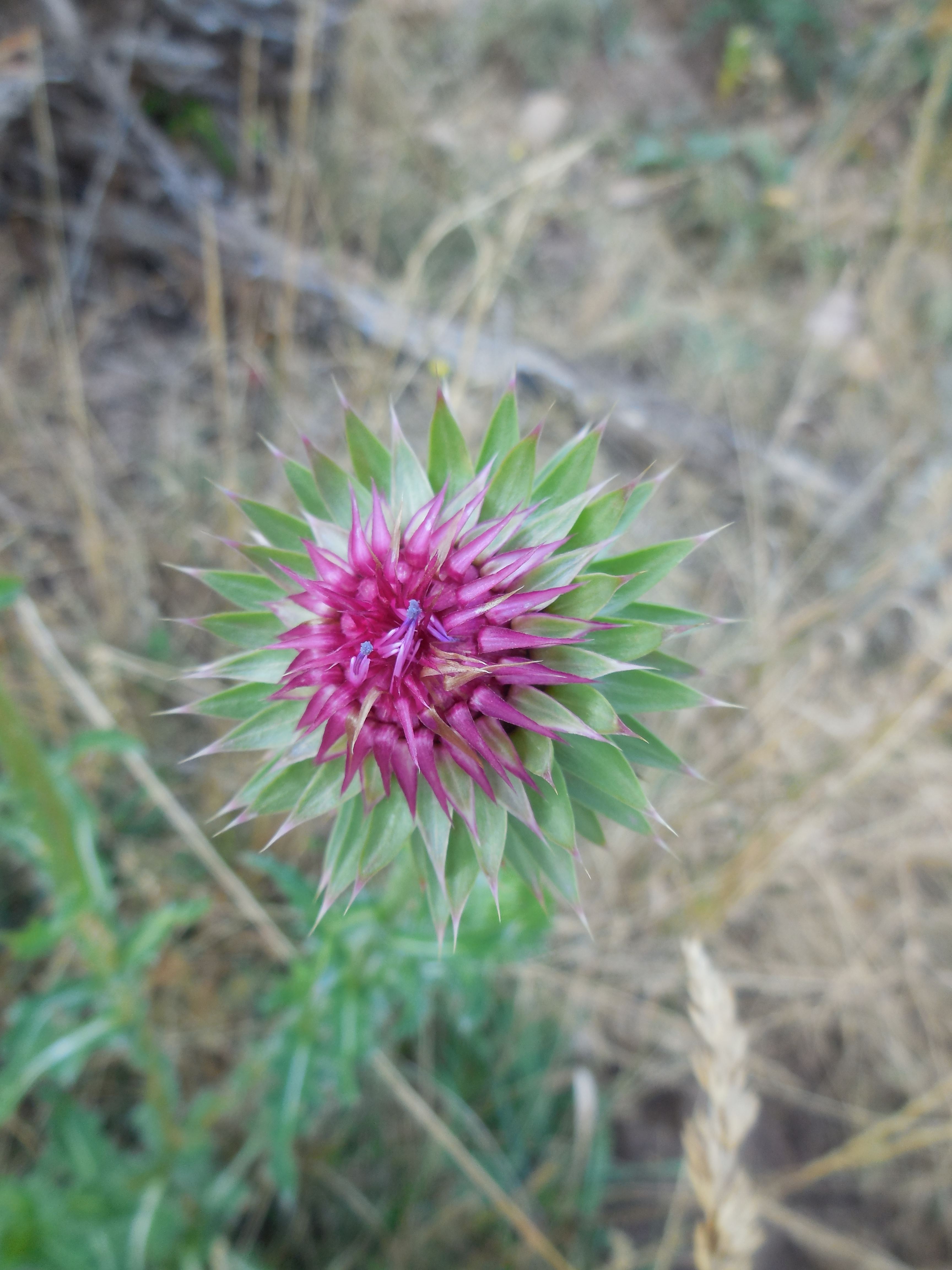
Musk thistle: flower
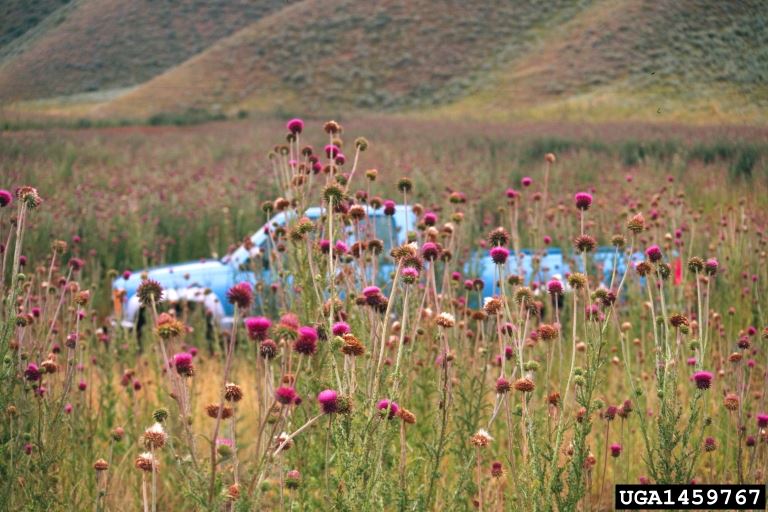
Musk thistle: infestation
Resources
-
-
References
Beck, K.G. (2013, November). Musk thistle. Retrieved from http://extension.colostate.edu/topic-areas/natural-resources/musk-thistle-3-102/
DiTomaso, J.M., G.B. Kyser et al. (2013). Weed Control in Natural Areas in the Western United States [PDF file]. Weed Research and Information Center, University of California. Retrieved from https://wric.ucdavis.edu/information/natural-areas/wr_C/Carduus_acanthoides-nutans-pycnocephalus-tenuiflorus.pdf View PDF
University of Arkansas Division of Agriculture Research & Extension. Musk thistle [PDF file]. Retrieved from https://www.uaex.edu/publications/PDF/FSA-3054.pdf View PDF
University of Nebraska – Lincoln Extension. (2012, March). Musk thistle [PDF file]. Retrieved from http://extensionpublications.unl.edu/assets/pdf/ec176.pdf View PDF
Washington State University. (2006, February). Musk thistle. Retrieved from https://extension.wsu.edu/whitman/2013/11/musk-thistle/
Zouhar, K. (2002). Carduus nutans. Fire Effects Information System. Retrieved from https://www.fs.fed.us/database/feis/plants/forb/carnut/all.html




